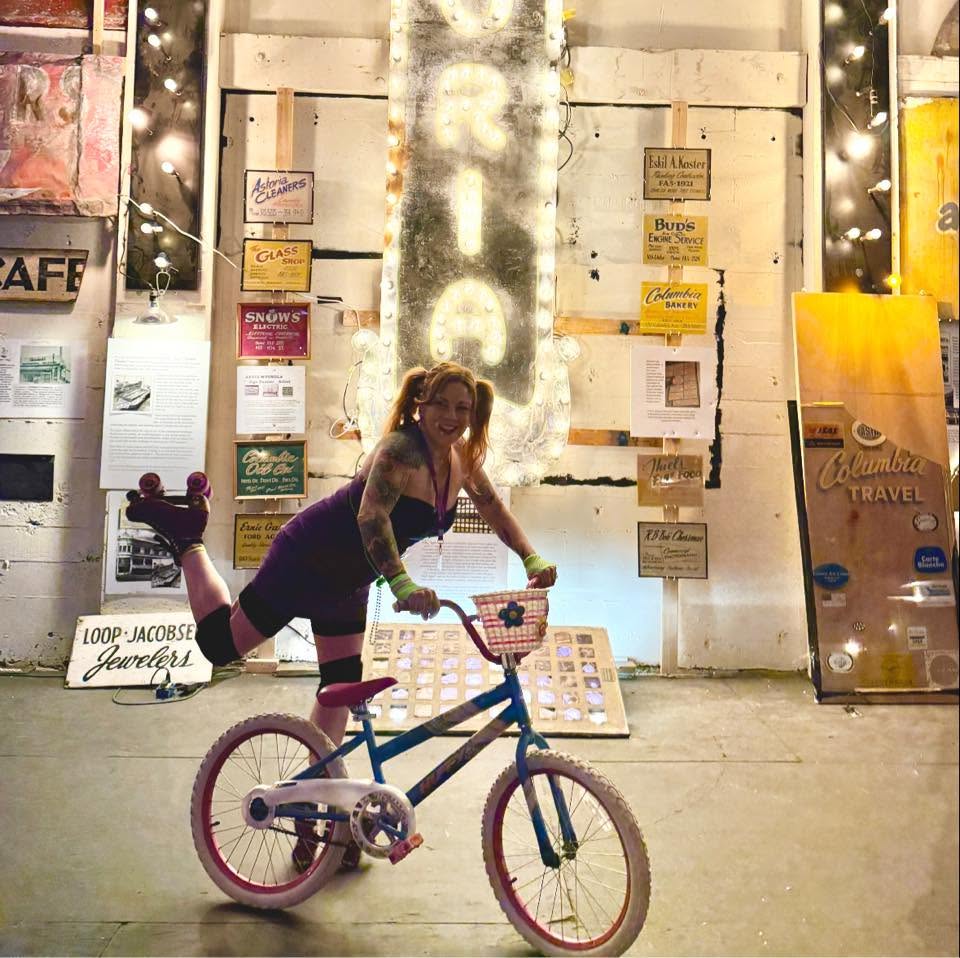Dressing for success
Published 5:00 pm Tuesday, September 30, 2008
The worthy old adage, “don’t judge a book by its cover” encourages us to look beyond the surface to gauge a person’s worth, and to discount factors like appearance or first impressions.
Trending
But the truth is, the way people dress plays a big role in how others perceive them.
In the workplace especially, the stakes can be high. Employee appearance can affect a business’s image in the community, something that can potentially help or hurt the bottom line.
Over the past two decades, Americans have come to favor casual attire more and more, both at work and at home. Also, a rising tide of younger workers is bringing new human resource challenges to the business world.
Trending
Personal statements like body piercing and tattoos, once unthinkable in most work settings, are now much more prevalent than they were a generation ago.
The answer to questions about what’s appropriate is – it depends.
Fred Meyer grocery/department store
Fred Meyer, which has a store in Warrenton, is one of the largest employers in Clatsop County. The firm is a subsidiary of the Kroger Co.
Fred Meyer has stores in Oregon, Washington, Idaho and Alaska. The North Coast store in Warrenton employs about 128 people.
Melody Marsh, human resource coordinator for the North Coast location, said the company has a 32-page dress code that spells out the rules for managers and other employees. Managers are expected to wear more formal attire than other “associates,” the company term for employees.
“Managers must wear ‘business-like’ clothing,” Marsh said. “Casual attire is OK for other employees.”
Business attire includes white button-down shirts for men and white blouses for women, along with black pants or skirts.
“Casual attire is the Fred Meyer polo shirt, in Navy blue or French blue,” Marsh said. “[With that] employees can wear any color slacks or cargo pants.”
Athletic footwear is OK in the store, where most employees are on their feet all day. That goes for managers too, who may wear good quality black athletic shoes with business attire.
The dress code is designed to allow employees to dress appropriately, according to company standards, while also maintaining margins of safety.
“”Most of ours [rules] are for safety,” she said. “No artificial fingernails. Wedding rings are OK, but not a lot of rings on your hands. And many employees have opted not to wear wrist watches when stocking shelves because the bands catch on shelving and merchandise.”
While jewelry can’t interfere with work or efficiency, the company recently did an overhaul of its dress code that relaxed the rules and took into account extensive employee feedback.
“Men can now have pierced ears,” Marsh said, as long as the earrings are simple studs.
While relaxed trends in the workplace seem to favor younger workers, Marsh said earrings have wide appeal among male Fred Meyer employees. “After they changed it so men could wear earrings, I couldn’t believe how many men over 50 began wearing them.”
As far as other types of body piercing employees can now show up at work with nose and tongue piercings, with just small studs allowed.
Tattoos are another issue where the Fred Meyer dress code has adjusted to fit current mores.
“Times change,” Marsh said. “It’s uncommon now for employees not to have a tattoo.”
Conservative tattoos are permitted at work, but extensive body tattooing must still be covered up.
Another change relates to facial hair. Men previously could not have beards, except in Alaska stores where climate is an issue; now goatees are OK. But men’s hair must be short; no longer than the bottom of the collar.
Banking
One area of business that remains conservative in terms of workplace dress is the realm of banking.
Genevieve Butenshon is branch manager for the Bank of Astoria in Warrenton. She said the bank takes dressing for success seriously.
“We actually have a section in our code of conduct that employees must read annually and sign,” she said. The code includes the bank’s philosophy about how employees should dress for work. “We’re handling people’s money, and perception is everything.”
Butenshon said the Bank of Astoria requires female employees to wear stockings with skirts or dresses, and socks with slacks. No sleeveless shirts, and even cap sleeves are frowned on mainly because not everyone looks good in this type of clothing. The idea is to convey a consistent, well-dressed image to customers.
Tattoos and piercings can also be an issue in the financial world. Encouraging appropriate dress can become a matter of educating new employees about what’s OK and what’s not.
“We are dealing with the challenge of the younger generation coming in,” Butenshon said. “We have to explain what professional dress is.”
Tattoos must be covered at work and women are allowed no more than two piercings in each ear. Visible piercings elsewhere are a no-no. Matters of cleavage and how much skin to show should err on the side of modesty.
Butenshon said one rule of thumb is an employee should be able to bend over and not have additional skin showing. That means no belly buttons or small of the back showing.
“It’s not professional appearance,” she said. “Banking is a conservative industry, and that’s the standard.”
Butenshon said it’s not that the Bank of Astoria expects employees to spend a fortune on clothing.
“We don’t care if you wear the same outfit several times a week as long as it’s clean,” she said. “A lot of us shop at Ross, and some even at Goodwill.”
Attire questions are particularly pertinent for small businesses that don’t have HR departments to handle personnel issues. Butenshon said small business owners who are concerned about employee dress should have some sort of formal policy in place.
“Make expectations clear,” she said. “In Mom and Pop shops, it’s going to be up to them to decide what they think is appropriate.”
Butenshon said sometimes on special occasions Bank of Astoria staff may dress casually for a specified event. But overall, their dress code is consistently conservative.
“Dress with the expectation of representing the bank. You put on your play clothes when you’re home and at work you wear professional attire,” she said. “We hear comments all the time about how nice our employees look.”
Coffee and books
Godfather’s Books and its owner Charlie Holboke are institutions in Astoria.
Holboke first opened the quirky bookstore and coffeehouse on Commercial Street in 1993.
On any given day, locals and tourists can be found seated at the well-worn coffee counter or around scattered tables in the store, having spirited discussions about politics or perusing new and used titles over a cup of espresso or tea.
Holboke said the standard of dress in the coffee and book realm has always allowed room for creative expression.
“Most of my employees have had tattoos since the 90s,” he said. “I used to have a store in Seaside for 20 years, and I was seeing tattoos then.”
Holboke has never given much thought to a dress code for his business, and has never found the need for one. He has several tattoos himself, as do some of his employees now. He hasn’t seen too many job applicants with body jewelry, but thinks that too many piercings could put customers off.
“Our customers are pretty laid back,” Holboke said. “About the only thing that’s a no-no [for employees] is shirts with obscenities on them.”
Small business owner’s guide to dress codes
Employers actually have a great deal of latitude to decide what kind of attire is right for their workplace.
Dress code tips:
Spell out your policy clearly and communicate it to your employees so everyone knows exactly what is permitted and what isn’t.
Explain exactly what the consequences will be for violating the dress code.
Base your dress code on your business needs. This can be helpful if you encounter a legal challenge.
Apply the code equally to all employees.
Be ready to accommodate reasonable exceptions, disabilities and religious beliefs.
Employee guide to dressing for success
A good rule of thumb about dressing for success comes from Genevieve Butenshon, branch manager for the Bank of Astoria: “Dress for the position you want, not the one you’re in.”
There are two basic ways to dress for work or a job interview: business attire and business casual. What’s the difference?
Business attire
Women
Formal business attire for women means solid, darker colors, in the form of a suit with a conservative cut, along with dark shoes, and panty hose with skirts.
Keep the jewelry discreet and the perfume to a minimum.
Hair should be neat, nails manicured, makeup light.
Men
Men should wear solid-color suits with long-sleeved shirts and conservative low-key ties.
Dark socks and professional, leather shoes
Hairstyle neat, nails trimmed
Business casual attire
Women
More relaxed, lighter colors
Khaki, corduroy, twill or cotton pants or skirts
Sweaters, polo/knit shirts are OK
Solid colors are best
Men
Khaki, gabardine or cotton pants
Cotton long-sleeved button-down shirts, polo shirts or knit shirts with collar
Sweaters OK
Leather shoes and belt
Tie is optional









